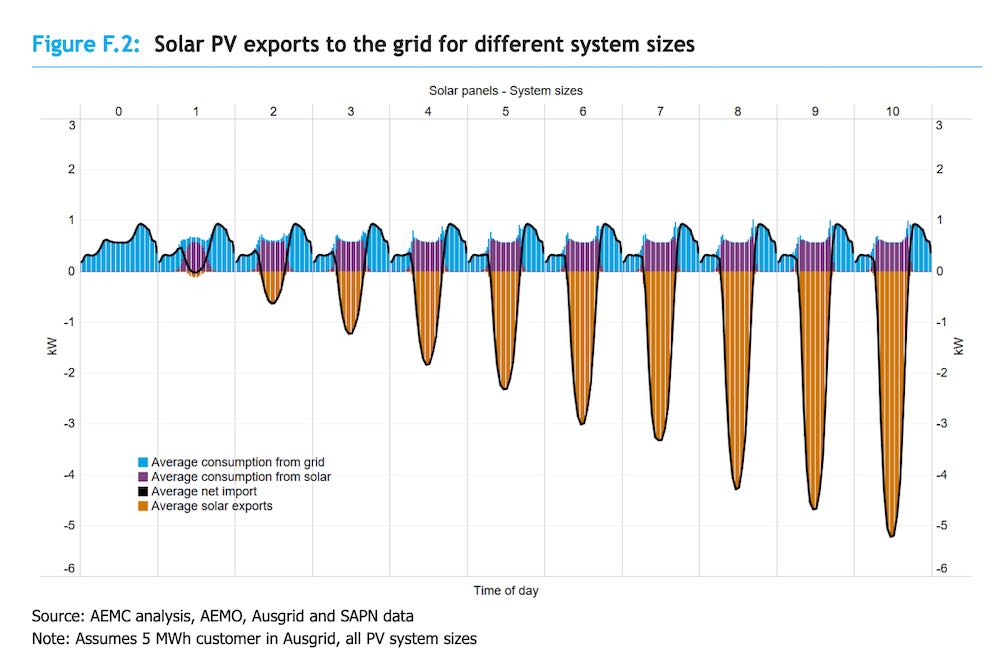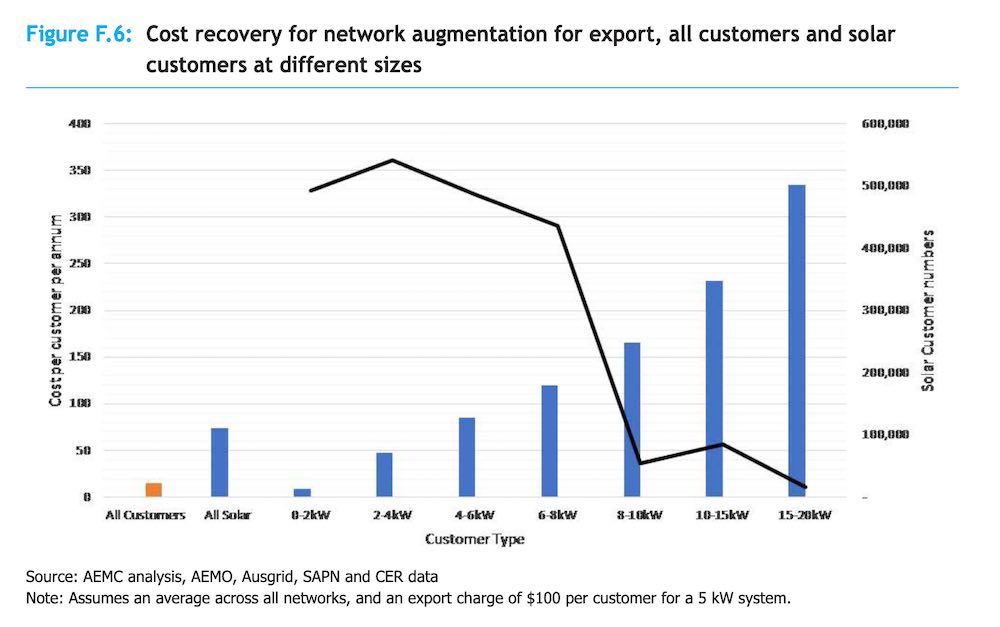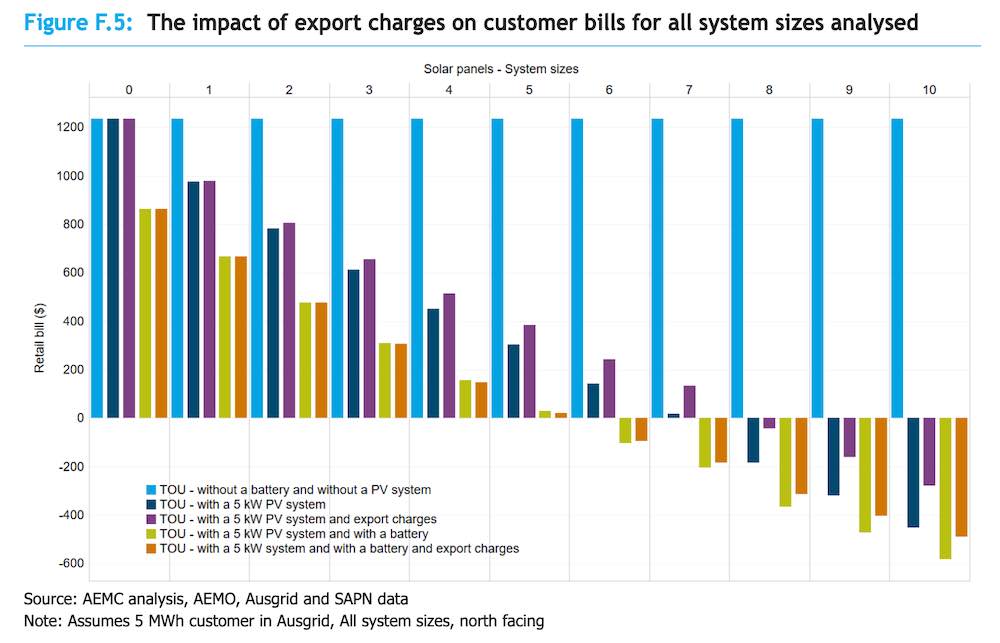Solar households woke to the news on Thursday that they may soon be charged an additional “solar tax” for exporting their rooftop-generated power to the grid, under new rules proposed by the Australian Energy Market Commission, the main rule maker for the energy market.
As RenewEconomy reported here, a draft ruling from the AEMC proposes the introduction of a flexible “two-way” pricing system that would charge solar households somewhere in the vicinity of 2c/kWh for grid exports, probably based on a time-of-use pricing system, at an estimated average annual cost of up to $100.
This, the AEMC has theorised, would be a win for networks, allowing them to tailor their own pricing mechanisms to ensure investment in parts of the grid where needed; it argues it is also a win for non-solar customers, protecting them from the costs of upgrades for solar; and it insists it is even a win for solar customers, in that it would allow for more – but smarter – rooftop solar on the grid.
But how did the AEMC come to its conclusions on solar grid costs and how they should be distributed? And what would the implementation of a solar tax mean for rooftop solar returns?
According to its draft report, the AEMC started its journey with three potential scenarios for consumers in Australia’s booming rooftop solar market: Do nothing to upgrade the grid, pass on no costs, but nobble distributed solar investment and returns in the process; upgrade the grid and spread the costs over all customers; upgrade the grid and recover costs through export charges on solar customers only.
Having summarily ruled out scenario one, the Commission said its analysis of total revenue recovered under the remaining scenarios indicated that the fairest distribution of costs was made under scenario 3; as opposed to scenario 2, where all customers – solar and non-solar – would pay an estimated $14 a year to cover the cost of solar exports.
In particular, the report said, scenario 3 would mean that customers with no solar PV or battery were not subsidising customers with large or very large solar PV systems, while solar customers saw their bill savings reduced only slightly.
The question, then, shifts to how to go about charging for solar exports?
The Commission considered three different approaches for this: Volumetric (c/kWh); volumetric time-of-use with charges for export during the day and payments, or rebates for export during the evening, and; demand charges ($/Kw) based on maximum output.
These charges were applied with a target recovery from each customer of between $10-$100 a year, based on the charges required from each to recover the cost of network upgrades. The results assumes the top end of this range at $100 a year per customer, for a typical 5kW system.
For volumetric charges, the export charge total was divided by total solar output of a 5kW system to give a c/kWh rate to apply to all system sizes. For volumetric time-of-use, the export charge total was divided by total system output between 10am and 4pm. This charge was then applied to the kWh output of all system sizes during the solar PV output period. Outside those times, the solar exporter would get a rebate of 30% of the network tariff for each kWh exported.
For demand charges ($/kW), the export charge total was divided by the maximum measured kW output of a 5kW system. This value was then multiplied by the maximum kW output of all the other PV system sizes analysed.
As the chart below shows, the modelling found that the TOU export charge had the least impact on incentives and ongoing benefits of installing solar PV and still delivered bills well lower than for customers without solar PV.
According to the TOU model, the AEMC noted that it would only be the large solar customers that paid a significant export charge each year.
“Where these costs seem large,” the report added, “in excess of $200 for a 10kW system for example, these should be taken in the context of the significant export revenue earned by systems of this size.”
On this point, the modelling stresses that the benefits of solar PV to the asset owner are currently still predominantly derived from revenue from exports, rather than savings through self consumption – particularly as system sizes increase.
As such, the AEMC modelling concludes that, by comparing export charges in figure 6 (see above) with export revenue in Figure 3 (below) “export charges would have a small impact on the incentives for new solar PV systems, particularly small and moderate systems sizes, and even at large sizes, the majority of the revenue incentive remains.”
The incentives for adding a battery, meanwhile, would remain relatively unchanged, or be slightly improved, depending on the ability of a battery system to manage a household’s solar export profile, and export for rebates, under a time-of-use system of export charges.
And according to the chart above, the modelling also shows that the addition of a battery storage system could mean that export charges would have “little or no impact” on overall investment return, for a solar and battery.
“This varies with size, however,” the report adds. “A small impact can be observed for sizes above 7kW, as can be seen in the chart below between the green (PV plus battery, no export charge) and orange (PV plus battery plus export charge).
“Export charges create a small additional incentive for customers with PV to invest in a battery. This incentive is also for the battery system to be reasonably matched with the solar PV output. Compared to the overall incentive for a battery, this additional incentive is small.”
The report concludes: “Even though the export charge is set based on a figure of $100 per annum for a typical 5kW system and then multiplied by the actual output of the system (either larger or smaller), this on average provides for $74 per customer per annum, largely due to the rebates solar customers earn under the TOU methodology.
“It is only the large solar customers, particularly those above 6-8kW that pay a significant export charge each year, and this would impact the least customers across the NEM at the current time.”
See also: Solar tax: Networks able to charge households to export solar power to grid
And: No biggie or bin job? Solar advocates react to export tax proposal















